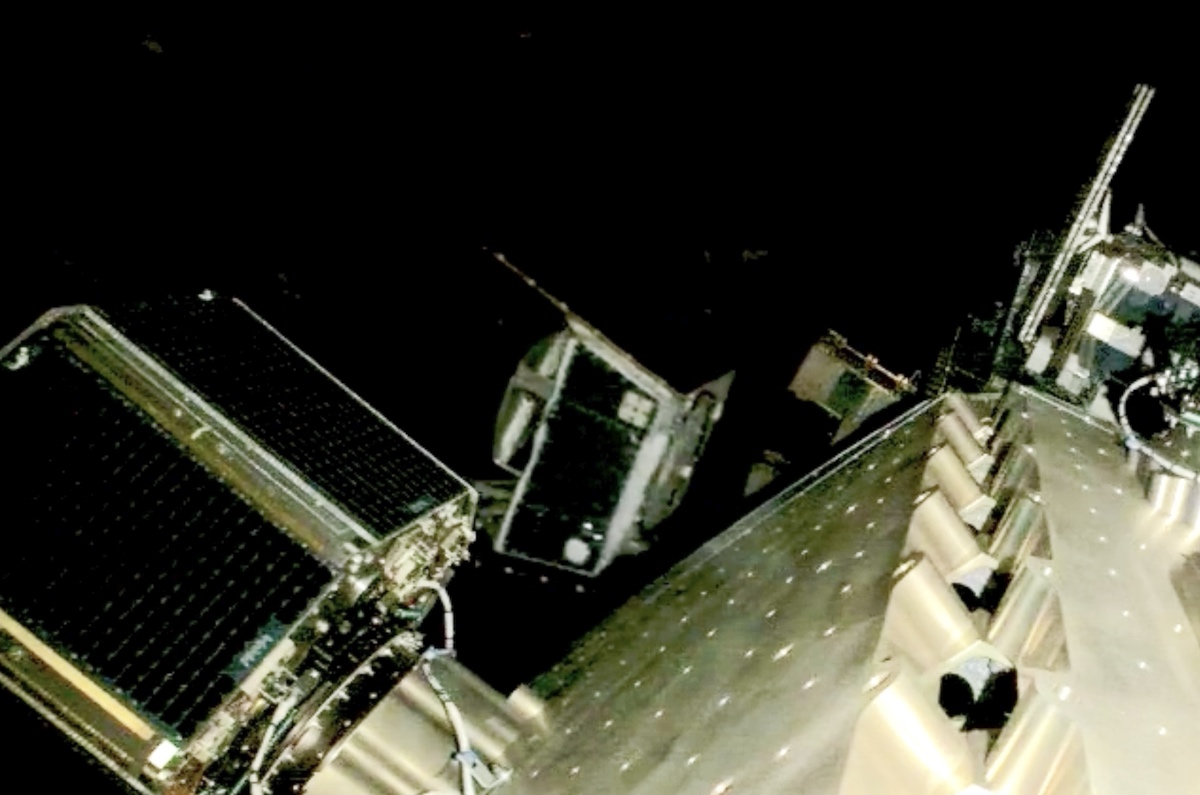The center of the Milky Way Galaxy hosts Sagittarius A*, a supermassive black hole with a mass of about 4 million solar masses that is very quiescent. Reflection of X-rays from Sagittarius A* by dense gas in the Galactic center offers a means to study its past flaring activity on timescales of hundreds and thousands of years. Now, astronomers using NASA’s Imaging X-ray Polarimetry Explorer (IXPE) have detected polarized X-ray emission in the direction of the molecular clouds in the Galactic center. The polarization angle is consistent with the supermassive black hole being the primary source of the emission, and the polarization degree implies that some 200 years ago, the X-ray luminosity of Sagittarius A* was briefly comparable to that of a Seyfert galaxy.
IXPE and Chandra images have been combined to show X-ray data of the area around Sagittarius A. The lower panel combines IXPE data, in orange, with Chandra data in blue. The upper panel depicts a much wider field-of-view of the center of the Milky Way. The thin white lines layered onto the top panel frame the highlighted area, and indicate that the perspective in the bottom panel has been rotated approximately 45 degrees to the right. The combination of IXPE and Chandra data helped the astronomers determine that the X-ray light identified in the molecular clouds originated from Sagittarius A* during an outburst approximately 200 years ago. Image credit: NASA’s Marshall Space Flight Center / Marin et al. / CXC / SAO / L. Frattare / J.Major / K.Arcand.
Sagittarius A*, which is more than 25,000 light-years from Earth, sits in the constellation of Sagittarius at the very heart of the Milky Way.
In previous X-ray studies, astronomers detected relatively recent X-ray emissions from giant gas clouds in its vicinity.
Given that these molecular clouds are cold and dark, the X-ray signatures of these clouds should have been faint. Instead, they shone brightly.
“One of the scenarios to explain why these giant molecular clouds are shining is that they are, in fact, echoing a long-gone flash of X-ray light, indicating that our supermassive black hole was not that quiescent some centuries ago,” said Astronomical Observatory of Strasbourg astronomer Frédéric Marin.
IXPE, which measures polarization of X-rays, observed the molecular clouds near Sagittarius A* for two periods of study in February and March 2022.
When the astronomers combined the resulting data with images from NASA’s Chandra X-ray Observatory and compared them to archival observations from ESA’s XMM-Newton mission, they could isolate the reflected X-ray signal and discover its point of origin.
“The polarization angle acts like a compass, pointing us toward the mysterious, long-gone source of illumination. And what lies in that direction? None other than Sagittarius A*,” Italian National Institute of Astrophysics researcher Riccardo Ferrazzoli.
Analyzing the data, the authors figured out that the X-rays from the giant molecular clouds were reflected light from an intense, short-lived flare produced at or near Sagittarius A*, possibly caused by the black hole abruptly consuming nearby material.
The data also helped the researchers estimate the luminosity and duration of the original flare — suggesting the event occurred some 200 Earth years ago.
“IXPE is playing a key role in helping us better understand the timescale on which the black hole at the center of our Galaxy is changing,” said IXPE project scientist Steven Ehlert, a researcher at NASA’s Marshall Space Flight Center.
“We know change can happen to active galaxies and supermassive black holes on a human timescale.”
“We’re learning more about this one’s behavior over time, its history of outbursts, and we’re eager to observe it further to determine which changes are typical and which are unique.”
The findings were published in the journal Nature.
_____
F. Marin et al. X-ray polarization evidence for a 200-year-old flare of Sgr A*. Naturepublished online June 21, 2023; doi: 10.1038/s41586-023-06064-x
Note: This article have been indexed to our site. We do not claim legitimacy, ownership or copyright of any of the content above. To see the article at original source Click Here














